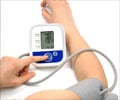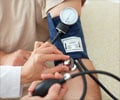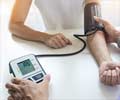Supine hypertension, undetected in seated BP checks, increases heart disease, stroke, and death risks. Measuring supine BP can reveal hidden cardiovascular threats and improve heart health.
- Supine hypertension increases the risk of heart disease, stroke, and death, even with normal seated blood pressure
- The ARIC study showed that 16.4% of people with normal seated BP had supine hypertension
- Measuring blood pressure in both seated and lying positions can improve early detection and heart health
Supine Blood Pressure and Risk of Cardiovascular Disease and Mortality
Go to source). However, a recent study reveals that checking blood pressure in only one position can overlook the risk of supine hypertension. It can go undetected if BP is only checked in the seated position.
Supine #hypertension increases the risk of heart disease and #stroke by up to 86%! #bloodpressure #medindia’
Supine Hypertension: A Hidden Danger
The study was conducted on Atherosclerosis Risk in Communities (ARIC) and followed participants for over 25 years. It found that people had normal BP when measured in a sitting position. Still, the same people showed high BP when measured in a lying position.Supine hypertension is a high blood pressure measured when lying flat on your back. According to the study, this condition increases the risk of developing coronary heart disease, heart failure, stroke, and death. However, these risks remain high in individuals taking medications to control their blood pressure.
The study highlighted that even patients with normal seated BP but elevated supine BP had significant health risks. These risks were comparable to those with both seated and supine hypertension.
Hidden Risks of Supine Hypertension
Doctors measure BP while patients are seated as it is quick and convenient. Thus, the study emphasized the need to re-evaluate current practices. Measuring supine BP even once could help detect a hidden high-risk health condition.The ARIC study was conducted with over 11,000 participants, aged 45-64, initially without cardiovascular disease. Researchers found that:
- 16.4% of people with normal seated BP had supine hypertension.
- 73.5% of those with seated hypertension also had high supine BP.
- Supine hypertension increases the risk of coronary heart disease, stroke, and heart failure by up to 86%.
- It also raised the risk of death from any cause by 43%.
What Should Be Done?
While the study shows promising results, more studies are needed before changing clinical guidelines. If seated BP is borderline high, it is recommended to check the BP at home while lying down using a validated device. This simple step can help one to understand their cardiovascular health.It is important to ensure that seated BP is measured correctly. Doctors may also consider supine BP checks for middle-aged and older adults or patients at higher risk of heart disease.
Improving Heart Health with Supine BP Checks
Supine BP measurement methods can identify the hidden risks of cardiovascular health. Future research aims on whether treating supine hypertension can reduce these risks and how it may relate to other conditions like dementia or cognitive decline.By taking blood pressure measurements in both seated and lying positions, we could prevent undetected cases of hypertension and improve heart health for millions worldwide.
Reference:
- Supine Blood Pressure and Risk of Cardiovascular Disease and Mortality - (https://jamanetwork.com/journals/jamacardiology/article-abstract/2828914)
Source-Medindia











